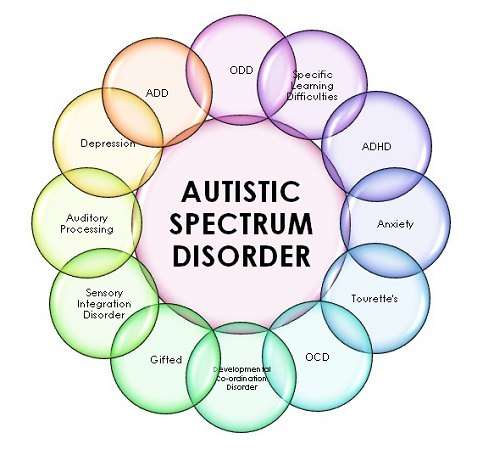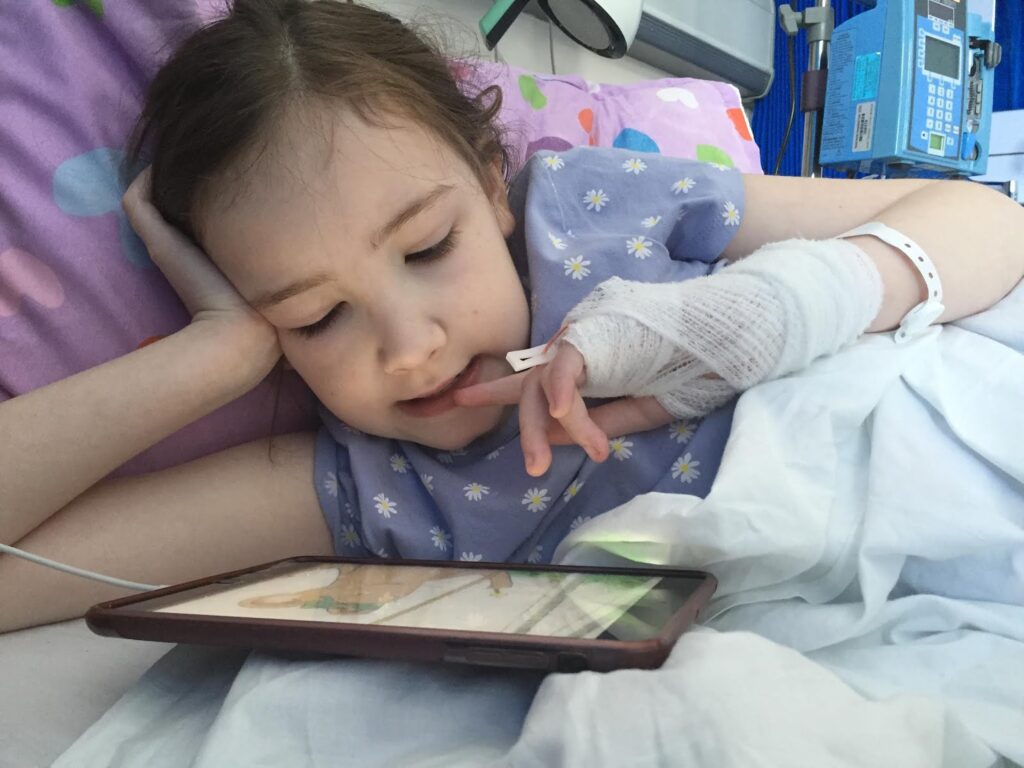Autism spectrum disorder, or ASD, is a disorder characterized by communication and social issues. There are many other specific symptoms seen in autism. These include emotional deficits, peculiar mannerisms, hyperactivity, and others.
Like any other neurological condition, ASD needs to be determined based on the symptoms that the patient exhibits. It cannot be diagnosed with tests in the laboratory, which makes it comparatively difficult. This is especially true as it is mostly diagnosed in childhood with a person who does not seek to engage in communication and has other features of behavior, or who can’t communicate efficiently.
For parents and loved ones, being familiar with the signs and ways of diagnosing autism can be helpful. This article will talk about how autism spectrum disorder is diagnosed such as how it is tested for in children. It will also discuss the methods of screening, the importance of diagnosis, and how stem cells can improve the symptoms.
How is autism diagnosed?
Getting an autism diagnosis is difficult when compared to many other medical conditions. There are no tests or radiological examinations that can be done to confirm the diagnosis. Instead, the doctor needs to observe the child’s behavior, symptoms, and signs, as well as their developmental history.

ASD can be diagnosed from a very young age, as young as 18 months. Very skilled professionals or watchful parents may identify symptoms even in a newborn. In most cases, the definitive diagnosis is made at a much older age. In some instances, an ASD diagnosis in adults is made. Autism diagnosis cost at an earlier age is better as interventions can be had sooner. They have more of an impact on development from this point.
Contact us
Stem cell therapy presents an opportunity for recovery with benefits and proven efficacy. You can learn more about the autism treatment with stem cells, what are the expected outcomes, the cost and duration of the program.

Medical Advisor, Swiss Medica doctor
Diagnostic criteria for autism spectrum disorder
The Diagnostic and Statistical Manual provides the criteria required for an ASD diagnosis.
A child needs persistent deficits in all three aspects of social communication, which are the following:
- Deficits in social-emotional reciprocity. This can be seen in an individual who fails at normal conversation or responding to social interactions.
- Deficits in nonverbal communicative behaviors. For example, abnormal eye contact, poor understanding of gestures, and absence of nonverbal signals.
- Deficits in developing, maintaining, and understanding relationships. This may be seen with failure to properly modify behavior depending on social context. They may also show no interest in their peers.
In addition, they require at least two among the repetitive behaviors:
- Stereotyped motor actions, either with objects or speech. This could be iterating someone else’s words or saying the same thing repeatedly. It may also include flicking a switch on and off repeatedly or spinning objects incessantly.
- Fixation on sticking to a routine. Demonstrates distress and agitation at modifications to regular activities. This can include things as minute as paths taken to school.
- Strong fixations on odd interests. They may have an abnormally intense obsession with weird objects or unusual activities.
- Reacting either excessively or too little to sensory stimuli. This can include seemingly ignoring pain or heat/cold, touching objects too much, and fixating on bright lights.
Even if not diagnosed in childhood, these criteria are required to be present during earlier life. They must also result in a degree of impairment in daily functioning. Finally, there must not be any other neurodevelopmental condition that can better explain the patient’s symptoms.
What is autism screening?
As stated earlier, there is no definitive autism diagnosis test that can be done to assist in the diagnosis of ASD. However, developmental screening can be used to assess a child’s risk of having autism.
Developmental monitoring for ASD uses different tools. These test a child to determine whether their neurodevelopment is progressing as normal.

Screening children at regular intervals, such as 9 months, 18 months, and 30 months, can help detect developmental delays that may point to ASD.
Autism screening tools
Several autism screening tools can be used for children. In the event of a positive screening result, a child should be more thoroughly assessed, particularly by a specialist. Some tests are more appropriate depending on certain factors. This includes the properties to be assessed, the age of the child, and the setting it will be used in.
Autism screening tools include the following:
- Ages and Stages Questionnaire. This tool is completed by parents. They will mark any milestones and delays that their children exhibit at a specific age. This questionnaire will then be scored by a professional.
- Communication and Symbolic Behavior Scales. This autism screening test is completed by parents. It assesses the communicative skills of a child. It can only be used up to 2 years of age.
- Parents’ Evaluation of Developmental Status. This evaluation tool assesses general development and behavior. The same format is utilized regardless of age.
- Modified Checklist for Autism in Toddlers. This tool is restricted to use for toddlers. It is completed by parents. It can be used in essentially any child.
- Screening Tool for Autism in Toddlers and Young Children. This tool is interactive and takes about 20 minutes to be completed. It makes use of activities in which the child engages. These activities assess communication, their habits in play, and imitation.
Genetic testing for ASD
It has been found that mutations in several genes are linked with autism spectrum disorder. However, none of these mutations are guaranteed to cause autism when they are present. As a result, genetic testing for autism cannot be used to diagnose autism.
Despite no importance in diagnosis, many autistic patients opt for genetic testing during private autism diagnosis. This is because it can help point to a contributor for this condition. In addition, such mutations may be a pointer to other disorders. This can help prevent these conditions from occurring.
Keep in mind that a negative genetic testing result doesn’t mean that there is no mutation for sure. The gene mutation may not yet be linked to autism, or the genetic testing type used is not specific enough.
Why is it important to be acquainted with the diagnosis of autism?
One of the reasons why diagnosing autism is important as it provides a definite explanation for the symptoms a person has. These symptoms can be quite distressing at times, so it can provide a better understanding of their source.
In addition, parents and teachers can interact more appropriately with these children. This can avoid unnecessary distress arising from something that can’t be controlled.
Perhaps most importantly, diagnosing autism will allow for the most holistic treatment. Symptoms that accompany autism, such as hyperactivity and inattention, can be medically treated. They can also undergo therapies to improve socialization, speech, and other deficits, and thus improve the lives and interactions of children and families.
It is accepted that earlier treatment results in more significant improvements for the patient. That is why it is important to establish a diagnosis as early as possible to permit early treatment.
What to do after autism is diagnosed?
After testing for autism, parents often strive to understand the most they can about the condition. They can receive information from health care professionals, online resources, and autism groups. Autism support groups are able to provide helpful information for the newly diagnosed and their loved ones.
Due to the many other conditions that an autistic individual may have, a full medical assessment is important to make. These medical conditions may include ADHD, epilepsy, insomnia, anxiety, and depression.
Treatment of any accompanying disorders should be sought out. In addition, interventional services should be initiated as early as possible. This includes behavioral therapy, physical therapy, and speech therapy, as required. Some therapies can be practised from home.
Stem cell therapy for autism
Interventions like medication and therapy can improve the symptoms of someone dealing with ASD. Medication only takes care of associated symptoms, and therapy can be time-consuming though. For those looking for how to get longer-lasting and pronounced changes, stem cell treatment provides a chance.
The way that stem cells work to treat autism is through their capacity to cause the regeneration of cells, and this ability extends to the nervous system. These cells are also able to increase blood flow to the areas in the brain, including those responsible for the development of various skills, which improves how much oxygen reaches those parts.

This process from stem cells encourages the building of new neuronal connections. It also helps with the repair of any cells which may have been damaged previously. All of these improve neurological functioning and improve health overall.
There is clinical evidence pointing to stem cell treatment causing changes in patients with ASD. However, despite this, not all patients are guaranteed to see improvements after therapy based on stem cells. All patients are different, and as such, outcomes vary.
Stem cell therapy for autism may be considered as an integral or supplement treatment with medication and non-medical therapies. This provides the best chance for improvement.
Contact us
Stem cell therapy presents an opportunity for recovery with benefits and proven efficacy. You can learn more about the autism treatment with stem cells, what are the expected outcomes, the cost and duration of the program.

Medical Advisor, Swiss Medica doctor
Medical Advisor, Swiss Medica doctor







